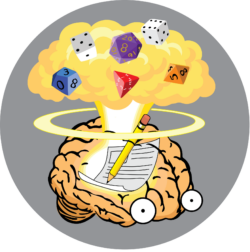I’m sure someone has already made these principles, but I can’t just google a concept without having the Concept’s name.
Definitions
- Stuff can be Material, Information, Communication, Inputs, and outputs.
- Systems can be people, departments, processes, and machines.
I’m calling these the model of System Transmission. It is related to Theory of Constraints (ToC)- but the focus of ST on how Stuff moves between Systems, while ToC is on its constraints.
ST focuses on mediums of motion and movement. It’s drawing on how Network Engineering (Information Technology) is all about the logistics of moving information.
01 Key Concept: Mediums of Motions are Systems. An example is a principle that when Stuff moves, it has to change into a new medium. When I used to transfer data from one computer to another, it has to be stored in a portable medium and then move it physically to a new System. Just moving it into the portable storage is a new System. When networks transfer data from one system to another, the data turns into Frames and Packets.
02 Key Concept: Defining Systems allows you to visualize and identify problems. The movement or transmission is its own System. Either the System is a fiber line, a person carrying the storage medium or package, a sign on the wall, a receipt, a delivery network of a trucking company, or the floor plan of a manufacturing plant.
03 Key Concepts: Throughput of Each System. In ToC and in ST, when Stuff moves from System to System, it has to wait for the next System to accommodate it. This is a concept I also drew from Network Engineering for ST is imagining all Systems having a throughput rate.
In Flowcharting this means imagining each Square (which is a Process in Flowcharting) can be a movement and a movement that has a throughput or process rate. We can use ToC to analyze a group of processes, but we can use ST to start defining the processes. We use the Pareto Principle 80/20 rule to prioritize the Systems we will illustrate and define.
This Concept is helpful when imagining Workflows or Logistics.
The workflow example:
When I email someone, I don’t expect them to be able to act on it immediately (unless that’s their only responsibility). In a small company where people have broad roles, people have to batch work. Most of the time, people are doing something; they cannot just react to something without losing their concentration in the task they are doing.
For every person stuff has to go through, it has to wait for the System’s throughput rate. So if there are four people, and these people have a throughput rate of 3 days then you have to wait for 12 workdays.
More detailed Example. If the “Customer’s Journey” has to go through the Sales, Design, Purchasing, and the supplier or subcontractor.
Things will be faster if there are things the Sales can readily provide to the customer stuff. I can use ST to model this situation. In this situation, where processes and standards are useful when there are Actions or Requests that sales don’t have to go through this long process. That when One salesperson developed a Quote for something, all the sales personnel can draw from that knowledge to speed up this process.
04 Key Concept – Rework Trap. When ST is tightly coupled, which creates a high error rate. These errors need to be handled and resolved, and this is rework.
Eventually, the rework rate adds to the workload of any System. Unmanaged systems generate more rework than their capacity.
Hub and Spoke. ST is what makes a hub-and-spoke systems work in Mass-Transit, Warehousing, Work-flows, and Mental Processes.


Leave a Reply
You must be logged in to post a comment.